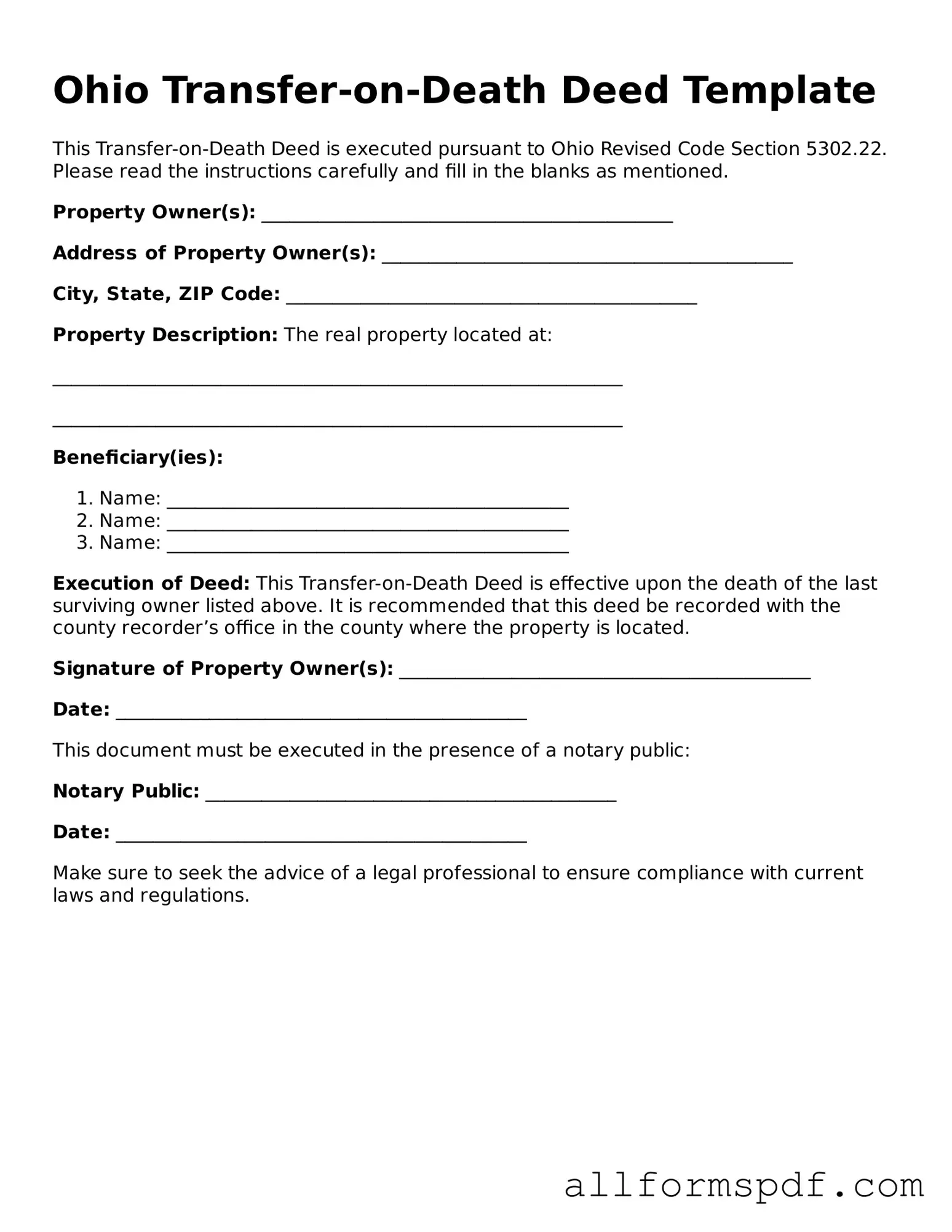When filling out the Ohio Transfer-on-Death Deed form, many individuals encounter common pitfalls that can lead to complications in the future. One of the most frequent mistakes is failing to include the legal description of the property. This description must be precise and can typically be found on the property deed. Omitting this information can create ambiguity and potentially invalidate the deed.
Another common error is not signing the form in front of a notary. In Ohio, the Transfer-on-Death Deed requires notarization to be legally binding. If the signature is not properly notarized, the document may not hold up in court, which can create significant issues for the intended beneficiaries.
People often forget to list all intended beneficiaries. When a property owner names a beneficiary, they should ensure that all individuals they wish to inherit the property are included. Leaving someone out can lead to disputes among family members and may complicate the transfer process.
Some individuals mistakenly assume that the Transfer-on-Death Deed automatically revokes any previous wills or estate plans. However, this is not the case. A Transfer-on-Death Deed operates independently of a will, so it is essential to review and update any existing estate planning documents to avoid conflicts.
Another mistake involves using outdated forms. The Ohio Secretary of State updates forms periodically, and using an old version may result in rejection by the county recorder's office. Always ensure that the most current form is being utilized to prevent unnecessary delays.
Failure to file the deed with the county recorder is a critical oversight. After completing the Transfer-on-Death Deed, it must be filed with the appropriate county office to be effective. Neglecting this step means that the deed will not be recognized, and the property may not transfer as intended.
Inaccurate information about the property owner can also pose problems. If the name on the deed does not match the owner’s legal name, it can create confusion and hinder the transfer process. Always double-check that names and details are correctly entered.
Some people overlook the importance of understanding how the deed affects taxes. While a Transfer-on-Death Deed allows for the transfer of property without probate, it does not exempt beneficiaries from property taxes. Understanding the tax implications is crucial for effective estate planning.
Additionally, individuals may not consider the implications of their current financial situation. If the property has liens or debts attached, these may not be resolved simply by creating a Transfer-on-Death Deed. It’s essential to address any financial obligations before transferring ownership.
Lastly, individuals sometimes forget to communicate their intentions with their beneficiaries. Clear communication can prevent misunderstandings and disputes later on. Discussing the details of the Transfer-on-Death Deed with family members can ensure that everyone is on the same page regarding the property transfer.
